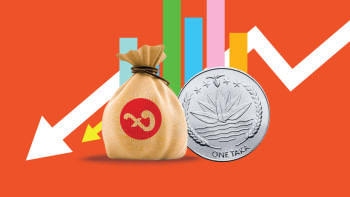Did remittance really increase in South Asia?
South Asia was somewhat unusual compared to other regions in the unexpected pickup in officially recorded remittances during 2020, particularly in the latter part of the year, the Washington-based lender said in the report "South Asia Economic Focus South Asia Vaccinates".
Only about a fifth of the 45 countries that published data saw increasing remittances, and many were South Asian countries, the report revealed.
Early surveys of remittance receipts suggested that remittances were falling during the crisis.
According to World Bank Covid-19 surveys Dashboard, more than half of surveyed households experienced a decrease in remittances during the second quarter of 2020 in 48 countries, mentioned the report.
However, the survey did not include any South Asian countries.
Given the massive displacement of migrants as they faced unemployment in host countries in April and May, earlier forecast expected a 22 per cent drop in remittances in South Asia in 2020.
However, given the very large drop in gross domestic product and consumption in South Asia— relative to sender countries' GDP declines due to the pandemic—regression estimates based on annual historical data predicted an increase in remittances in 2020.
Indeed, despite a dip around the second quarter of 2020, all countries registered growth by end-2020, it stated.
Bangladesh and Pakistan saw a growth in remittance of 18.6 and 17.4 per cent year-on-year in 2020, Nepal saw 6.7 per cent growth in the first half of fiscal year 2020-21 and Bhutan had a 200 per cent year-on-year increase for the whole of 2020.
Regarding remittance situation in Bangladesh, the report said during the initial months of the Covid-19 pandemic (March to May 2020), official remittances declined as lockdown measures were implemented and many flights from Bangladesh were suspended.
However, a surge in official inflows began in June 2020, likely reflecting a temporary switch from informal to formal remittance payment channels (given disruptions in international travel), additional transfers to support families following the floods in July, and transfers of accumulated savings by returning overseas workers.
Official remittance inflows in the country began to taper off in fiscal year 2020-21, as the net outflow of migrant workers likely slowed substantially. By February 2021, remittances rose by 21 per cent year-on-year on a 12-month rolling basis.
The report opined that whether the remittances would be expected to increase during the pandemic is uncertain.
On one hand, global studies indicate that remittances tend to be countercyclical, as they tend to increase when receiving households experience disasters or recessions.
On the other hand, these estimations assume that migrants' labour situation is uncorrelated with consumption shortfalls at home, but this Covid shock was global.
There is also less job stability and great uncertainty as to when life will normalise, which may lead migrants to be more cautious about sending all their savings, it stated.
The factors
The World Bank in its report identified some factors account for large increase in remittances in many South Asian countries.
Many migrants who lost their employment in foreign countries during lockdowns came home and repatriated their savings.
This is certainly true for many Nepalese and Bangladeshi migrants, most of whom work in Gulf countries.
Another factor is the shift of remittance from informal (unrecorded) to formal (recorded) channels.
In the past, a significant share of remittances may have arrived through trips home by migrants or their trusted friends with cash in hands, in-kind transfers, etc.
This was no longer an option during the pandemic amid restricted travel, so migrants had no choice but to adhere to other transfer mechanisms.
Financial innovation likely encouraged greater formalisation and perhaps higher total remittances.
The shift to more formal channels was facilitated by the development of Fintech and digital transfer apps such as PayPal and Alipay, which have made the digital transfer of funds more accessible and cheaper.
It is also possible that this technology encouraged a greater volume of total remittances, in addition to more formalisation, due to declines in transaction costs.
Changes in tax policy may have encouraged greater remittances, or at least greater formal remittances, the report said.
Pakistan and Bangladesh, which saw the highest surge in remittances in a sample of 45 developing countries, had just introduced new remittance tax incentives in 2020 and in 2019 respectively.
Some migrants were able to access cash transfers offered by host country governments. Workers who did not experience a large fall in income during the pandemic might have been willing to share the receipt of cash transfers (like stimulus payments in the US) with their home country families.
South Asians rank high compared to other middle-income countries on a measure of altruism, and emigrants could have drawn down their savings to increase remittances to family and friends in need.
While 2020 saw mostly a [net migrant outflow] as many workers had to repatriate, some have noted plans to return, but opportunities may dry up if the pandemic continues to affect employment permanently in services sectors in host countries, according to the report.
The one-off nature of these factors—such as availing opportunities to formalise the sending of transfers and the transfer of savings by migrants—increases the risk of remittances falling in 2021.


 For all latest news, follow The Daily Star's Google News channel.
For all latest news, follow The Daily Star's Google News channel. 



Comments